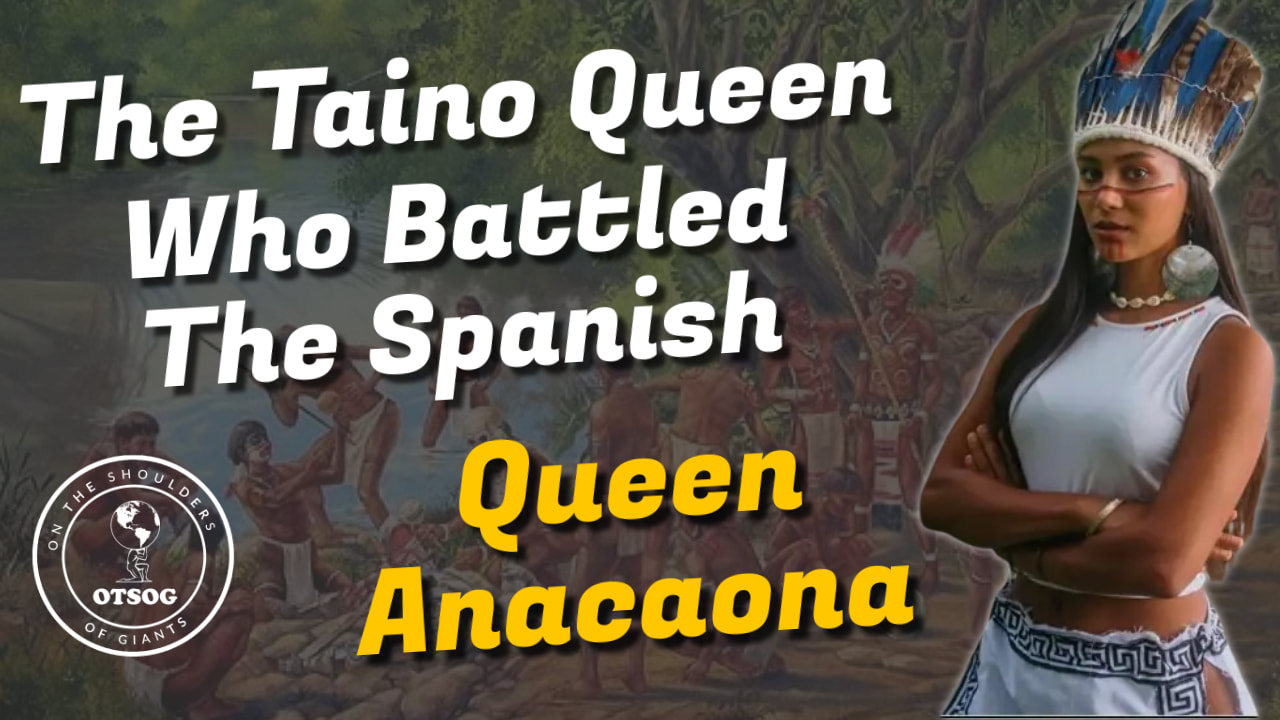|
In 1474, Queen Anacaona was born in Yaguana, which is now modern-day Leogane, Haiti. Yaguana was the capital of Xaragua, a heavily populated kingdom that was also very prosperous. Anacaona means “Golden Flower” in the native Taino language. She was the younger sister of the king of the Xaraguas’, Behechio. In 1494, Christopher Columbus visited the Xaragua kingdom for trade and was met by Anacaona and the king. Anacaona was seen as an equal negotiator with the king. She and her brother were able to successfully and peacefully negotiate trade with the Spaniards. She was held in high regard by her people even before she became queen, her legendary beauty and leadership made her popular and memorable. She would later marry the king of Maguana, Caonabo, which helped expand her influence over the Taino people of Xaragua and Maguana. After Anacaona married Caonabo he was kidnaped by Christopher Columbus’ troops and deported to Spain, he was accused of leading an attack on La Navidad (a settlement on the northern part of the Island for the Spanish); Caonabo died on the ship sailing to Spain. Meanwhile, Queen Anacaona was able to escape death by leaving Maguana and returning to her home in Xaragua. Upon arriving on the Island the Spaniards began to wage war against the Taino people. Led by their queen, the Tainos stood and fought for their land and their freedom. Xaragua was the only remaining kingdom that the Spanish had not overtaken, but that would soon change. In 1502, Spain shipped a new governor to the Island, Governor Nicholas Ovando. Upon arrival, he brought with him 2,500 Spanish troops. In 1502, Governor Ovando requested a meeting with Queen Anacaona, which she kindly accepted. The meeting evolved into a reception by Anacaona and the noblemen of Xaragua. During the reception, Anacaona and her noblemen were ambushed by the governor and captured. All of the noblemen were killed and Anacaona was taken to Santo Domingo, where she was killed by hanging at the age of 29. Queen Anacaona was fierce and beautiful, a queen of many talents, and a symbol of freedom. She was known for her ballets, poetry, plays, and ornaments her royal court often displayed. She was one of the most well-known women of significance amongst the Tainos. She stood in solidarity with her people to the death, even after being offered a position as a concubine for the Spanish. Anacaona was amongst the first of the Tainos to fight off the Spanish conquerors when they arrived on the Island of Hispaniola. Although she was defeated, she will always be remembered as a brave warrior and a champion of freedom. Queen Anacaona, we proudly, stand on your shoulders. J.A. Ward. Click here to support the OTSOG book series
1 Comment
|
Details
Categories
All
Click Here to join our mailing list
|
Contact Us: |
Connect With Us |
Site powered by PIT Web Design


 RSS Feed
RSS Feed



